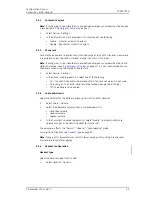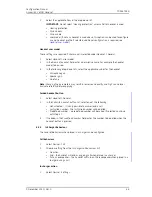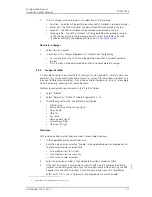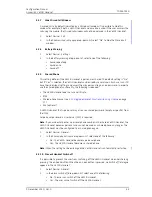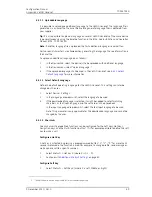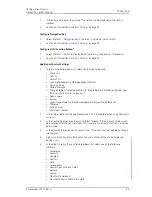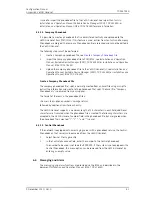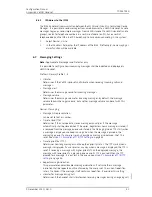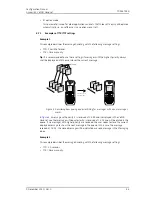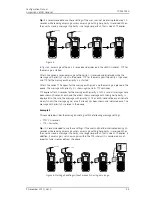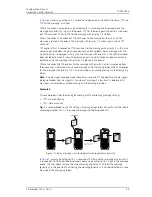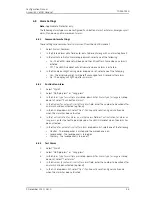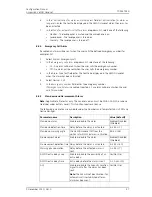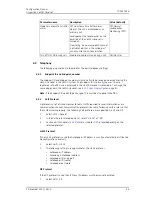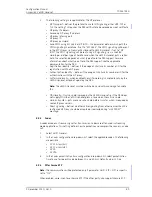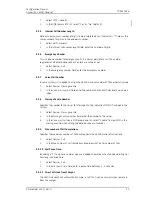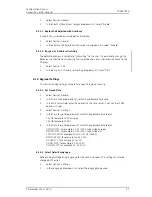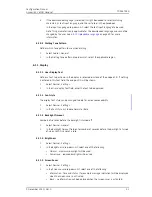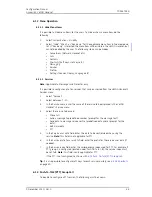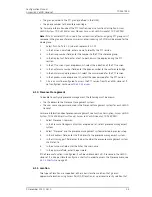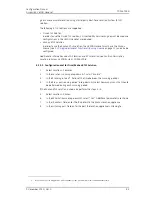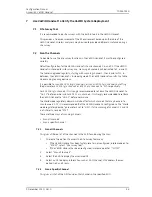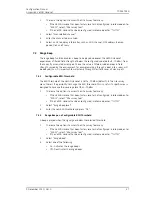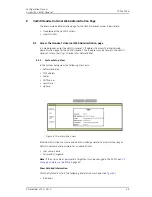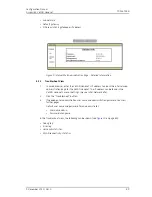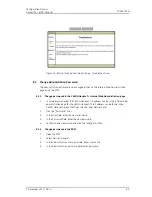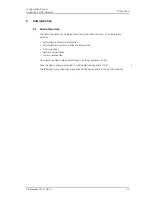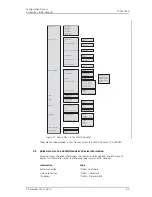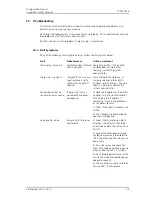
TD 92675EN
9 December 2011/ Ver. D
Configuration Manual
Ascom i62 VoWiFi Handset
49
2
The following settings are applicable for the SIP protocol.
•
SIP Transport – defines the protocol to use for SIP signaling, either UDP, TCP or
TLS. The setting TLS requires the PBX certificate to be uploaded as root certificate.
•
SIP proxy IP address
•
Secondary SIP proxy IP address
•
SIP proxy listening port
•
SIP proxy ID
•
SIP proxy password
•
Send DTMF using RFC 2833 or SIP INFO – this parameter defines which path the
DTMF signalling should take. If set to “RFC 2833“, the DTMF signalling will be sent
in the RTP stream, i.e. from VoWiFi Handset to VoWiFi Handset. If set to “SIP
INFO”, the DTMF signalling will be sent using SIP signalling, i.e. via the PBX.
•
Hold type – defines type of hold to send when the VoWiFi Handset puts a call on
hold. The selection depends on what type of hold the PBX support. For more
information about what type of hold the PBX support, see the applicable
documentation for the PBX.
•
Registration identity – defines if the endpoint shall use its number or ID for the
registration with the SIP proxy.
•
Authentication identity – defines if the endpoint shall use its number or ID for the
authentication with the SIP proxy.
•
Call forward locally – when enabled the call forwarding is handled locally by the
VoWiFi Handset instead of updating the PBX.
Note:
The VoWiFi Handset must be switched on and within coverage to handle
this.
•
MOH locally – Music on hold is played by the VoWiFi Handset i.e. if the PBX does
not supply MOH the VoWiFi Handset plays a tone when the call is on hold.
•
Hold on transfer – puts a second call on hold before transfer, which is required by
some SIP proxy servers.
•
Direct signaling – defines whether calls originating from other sources than the
configured SIP Proxy should be accepted or redirected using “USE PROXY“
message.
6.9.3
Codec
A codec encodes a stream or signal for transmission. Codecs are often used in streaming
media applications. This setting defines how to packetize and compress the sound in a voice
call.
1
Select VoIP > General.
2
In the
Codec configuration
drop-down list, select the applicable codec. The following
are possible:
•
G.711 A-law (EU)
•
G.711 u-law (US)
•
G.729
•
G.729A
3
In the
Codec packetization time configuration
drop-down list, select packetization
time to use for speech (value between 10 and 60 ms). Default value is 20 ms.
6.9.4
Offer Secure RTP
Note:
The communication will be protected only if parameter VoIP > SIP > SIP Transport is
set to “TLS”.
When enabled, voice is sent over Secure RTP if the other party also supports Secure RTP.

